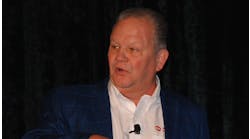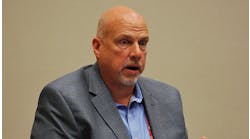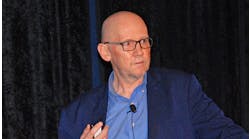A large consumer products company with manufacturing all around the world faced a specific challenge. The company was closing a facility in the United States, but that production wasn’t going away. Manufacturing would continue but in a consolidated operation.
Production needed to resume within 12 months, and the cost of operation needed to be reduced.
This created a unique challenge and opportunity for a secondary facility that was rewarded with funding to make several of those products in-house. This meant an infusion of capital to introduce new packaging lines.
“This is not their first time in the arena with these kinds of products,” explained Chris Monchinski, vice president of manufacturing intelligence, Automated Control Concepts, who presented, along with Anand Lakshmanan, principal engineer, Automated Control Concepts, during the Process Solutions User Group meeting, held in the run-up to Automation Fair 2021 in this week in Houston. “We’ve been working with this client a long time. They’re a world-class workforce and have extensive automation know-how. That high degree of automation presents an opportunity, but it presents a challenge, too.”
The existing Wonderware application software included 2,700 templates, 5,000 instances, 70 view nodes, 100 application engines, batch servers and a couple of historians. The good news was that it was standardized on Allen-Bradley PLCs, mostly ControlLogix.
The capital influx presented opportunities, and the company decided to change direction and go with Rockwell Automation PlantPAx because of its promise to rapidly deploy.
The new system includes FactoryTalk Directory, FactoryTalk View SE, ThinManager, FactoryTalk Batch Server, FactoryTalk Historian SE and FactoryTalk Linx Enterprise.
The reason the company chose to make such a far-reaching change was because it had discovered the original architecture didn’t scale the way it was supposed to, as architectures often do not, explained Monchinski.
“They only have this Wonderware system in this one plant,” he said. “Everything has to be updated at once. All template graphics and AOIs (add-on instructions) must be customized. The existing system was not really utilizing a template concept to its fullest realization. It was difficult to upgrade.”
On the other hand, PlantPAx can maintain and exchange template objects across multiple, dedicated FactoryTalk Directories, and PlantPAx can manage screen templates, global objects and parameter files. “PlantPAx has an out-of-the-box function for graphics and AOIs,” said Monchinski. “There’s no need to become an object-oriented expert. The segregation and isolation allow for an upgrade path.”
Along with resuming production within 12 months, operational cost reduction was an important goal for the transition.
“We are working in a good-manufacturing-practices environment,” explained Monchinski. “We’re going to build a platform for over 21 variants of this product. We’re going to realize a complete simulation system, along with the production system.”
One of the technical challenges with changing systems was that operators knew how to use the old system, and they liked it. “The new system had to perform as well or better,” emphasized Monchinski.
The editors of Control, Control Design and Smart Industry are reporting live from Automation Fair. When the event comes to a close, the editors will compile a report of the best, most important coverage from the event. Register now to pre-order the report and be among the first to receive it in your inbox. Pre-order your copy now.
Custom control modules were used to replicate the control model design from the existing system design. “We have been designing around the concept of control modules, and we’ve developed a library,” explained Monchinski. “They’re in structured text, not ladder logic. Because we did implement control modules, migrating to the control modules in PlantPAx was simple. We had the catalog. We were able to match up functionally our control modules with PlantPAx. We develop our control modules to meet our customers’ needs. And the PlantPAx control modules replaced all custom AOIs. With PlantPAx, you are getting modules we couldn’t have even thought of. We were able to pick out control modules and replace them with PlantPAx.”
A key capability of the existing system was the concept of a continuous phase. “A phase can be set to run, and the recipe can progress beyond the phase,” explained Monchinski. “The phase is later commanded off using transition logic. Rockwell Automation has a similar functionality called transfer control. It tells a phase to run without ending and then a successive instance of the same phase to run again, downloading updated parameters.”
The good news is the migration’s final recipe qualification is being done now. “Recipe qualification took 25 weeks,” explained Monchinski. The deadline for completion looms at December 31. “But everyone wants to be done before that. We had about a 13-week development cycle. The first recipe execution was on March 4. Qualification states were completed on April 17. We’re going to make product in well under 12 months.”




